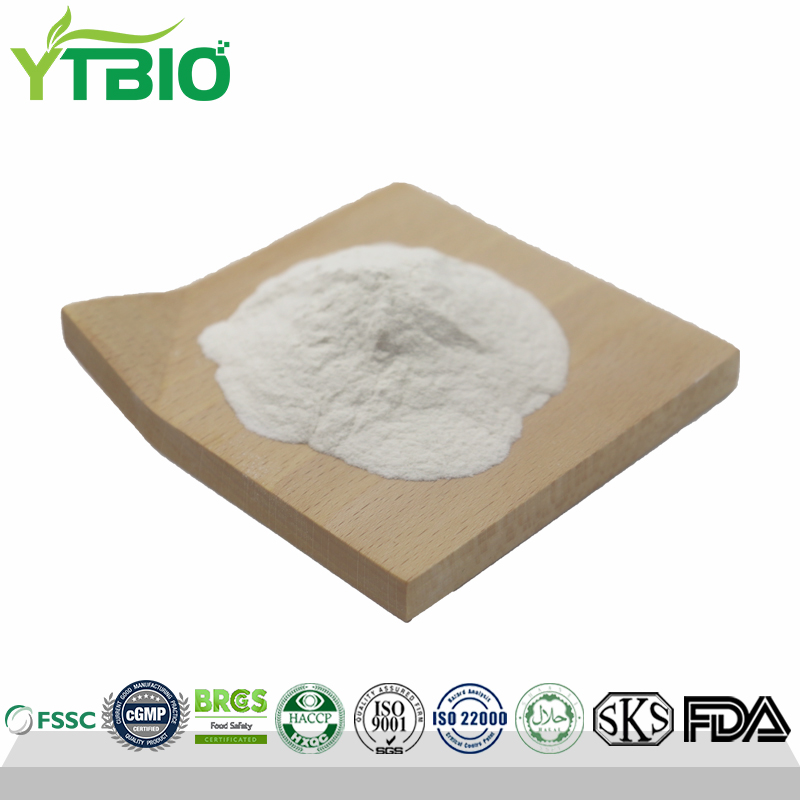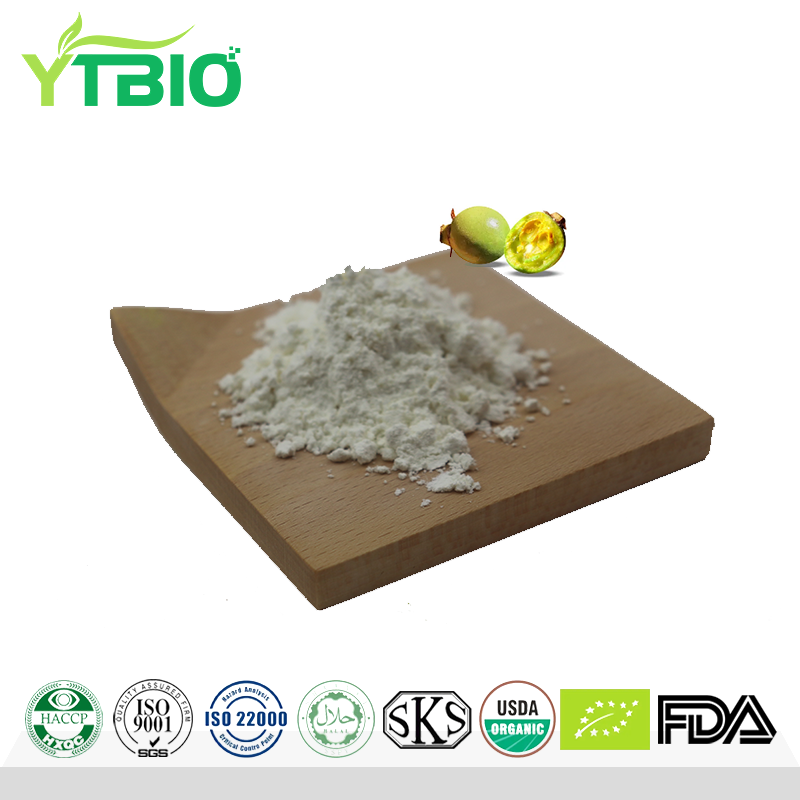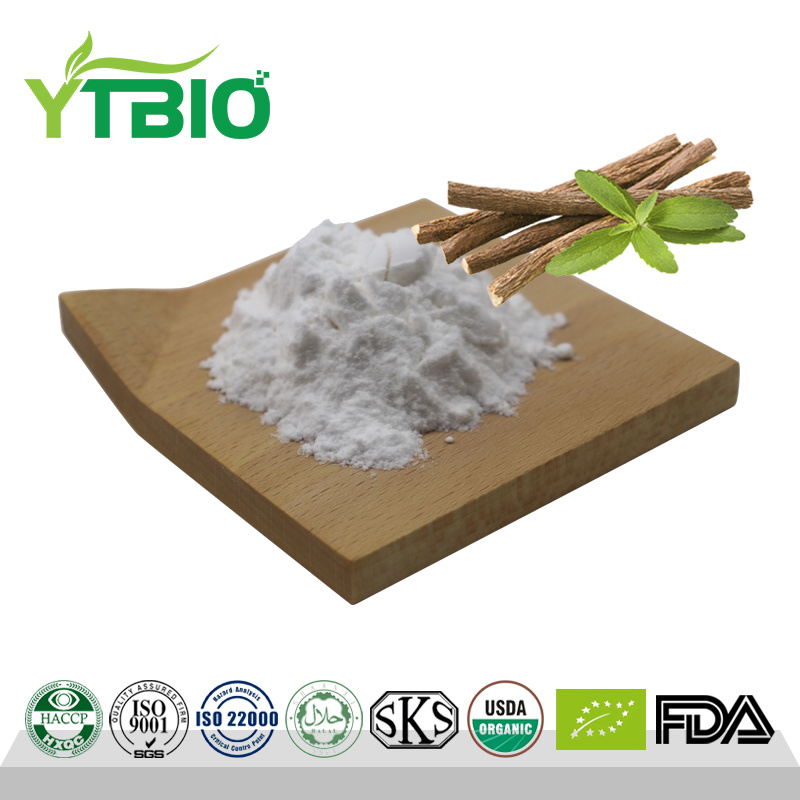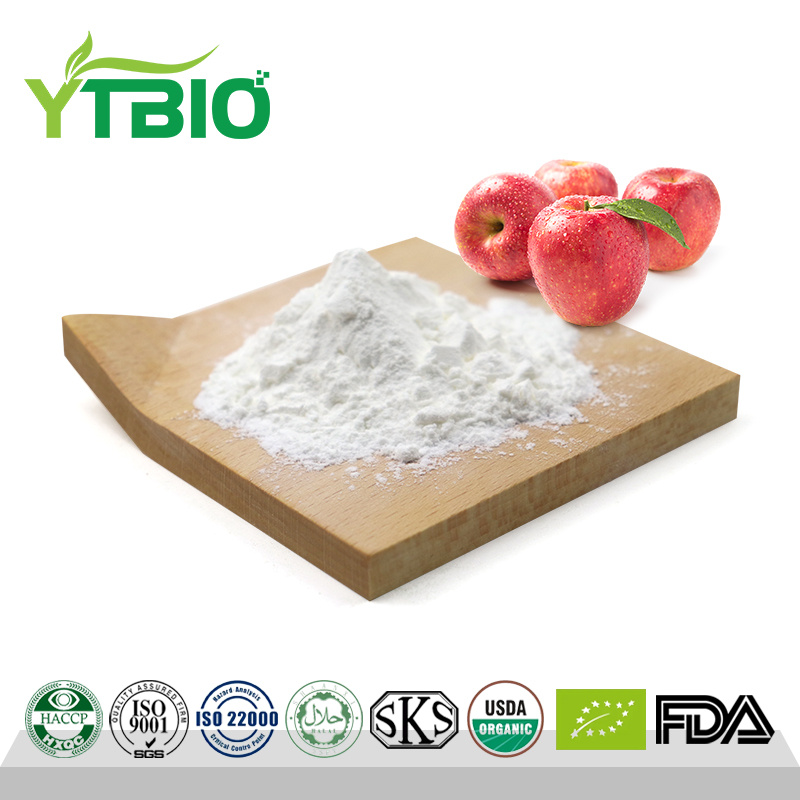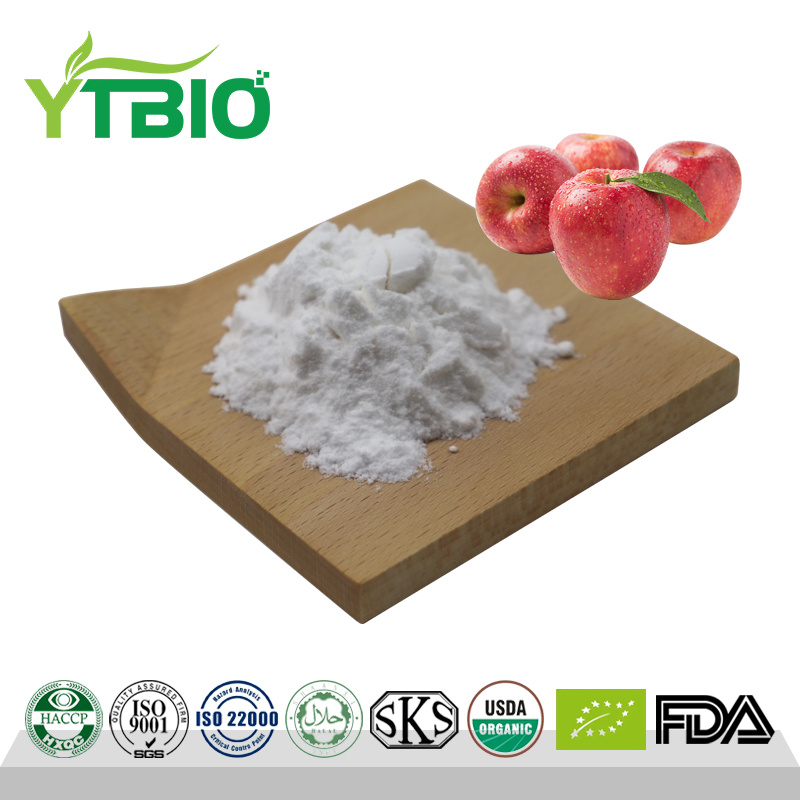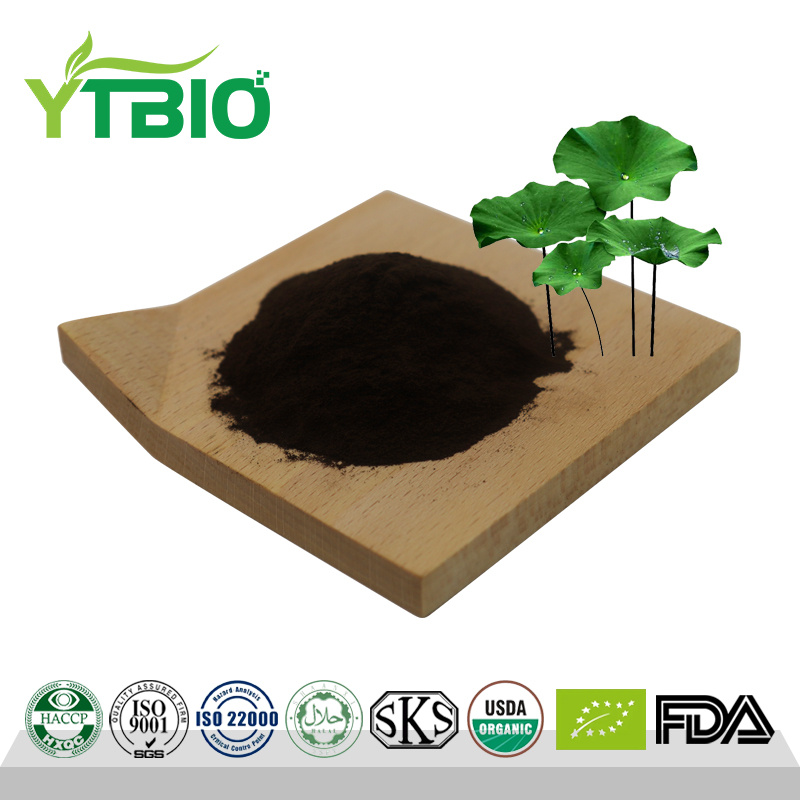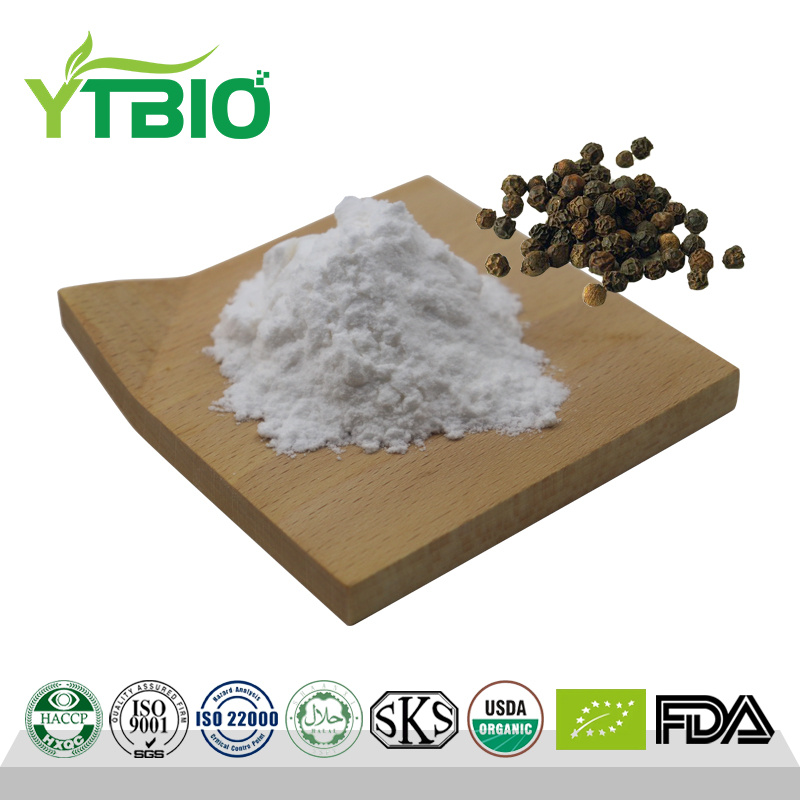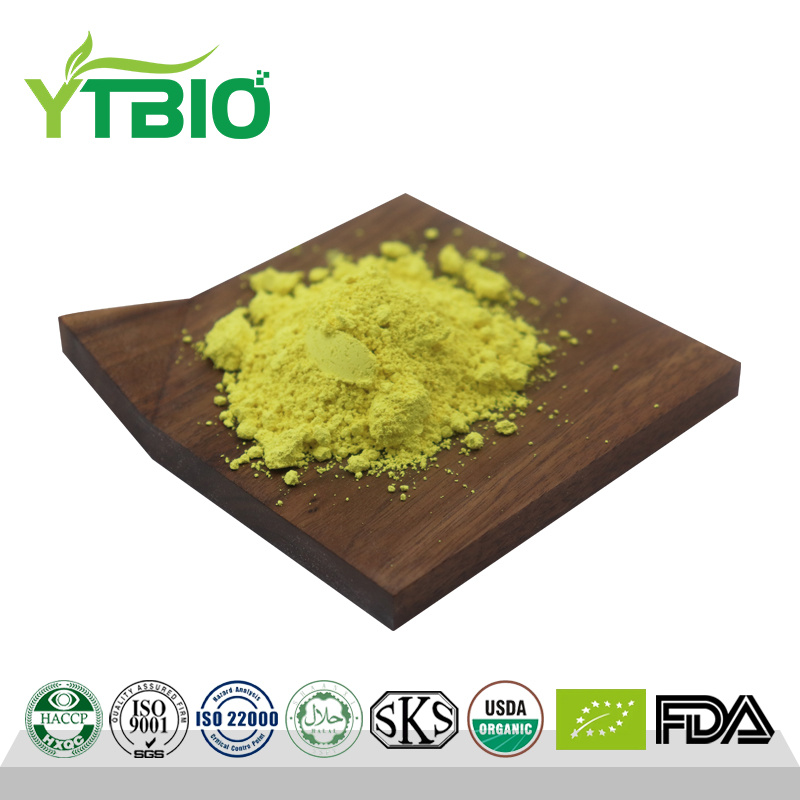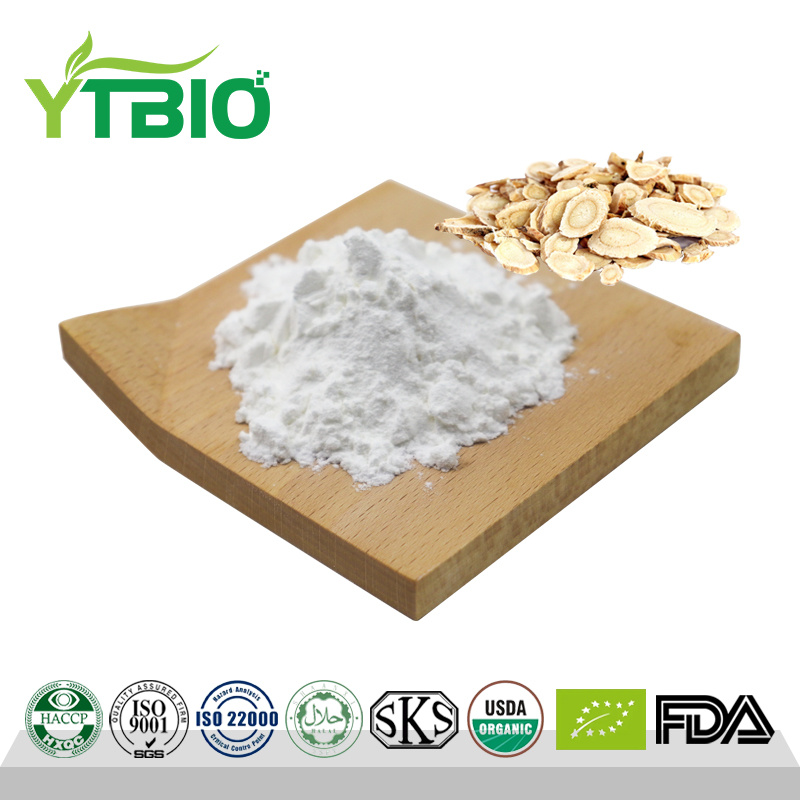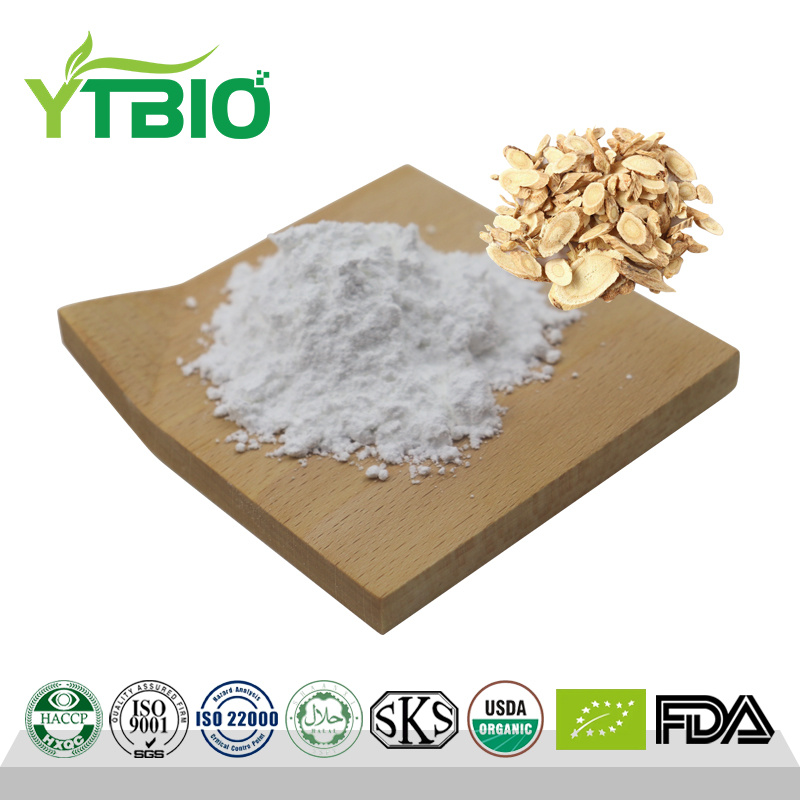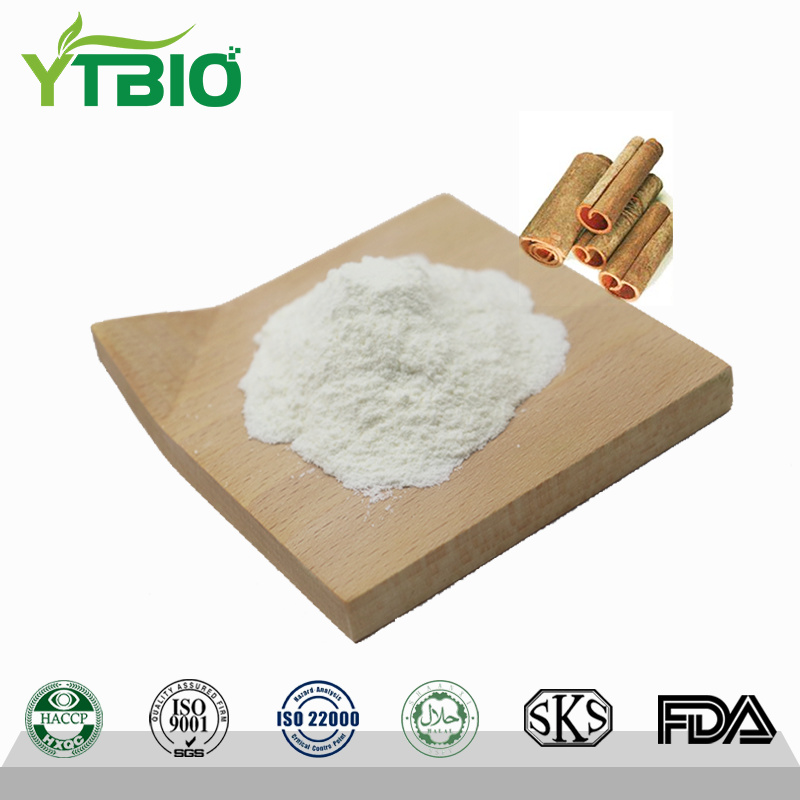CAS 140-10-3 Cinnamic Acid Powder
What is Cinnamic Acid?
Cinnamic acid is an aromatic organic acid with distinctive bioactivity, characterized by a chemical structure in which a benzene ring is conjugated with a propenoic acid group. This compound, known for its characteristic cinnamon aroma, is primarily biosynthesized in nature via the phenylalanine deamination pathway and is widely found in various plant tissues such as cinnamon bark and benzoin resin. Its unique structural features not only define its physicochemical properties but also confer diverse biological activities, including notable antibacterial and antioxidant effects. As a plant secondary metabolite, cinnamic acid plays a crucial role in plant defense systems and the synthesis of aromatic compounds. It has also become a valuable natural ingredient in the pharmaceutical, food, and cosmetic industries.
Application of Cinnamic Acid
Perhaps the most common thing we all know is that cinnamic acid is an additive in the food industry, but in fact it also has great potential in the agricultural field.
1. Antibacterial and antioxidant: Cinnamic acid has antibacterial and antioxidant properties, which can effectively protect crops from pests and diseases and improve the disease resistance of crops.
2. Promote plant growth: It can also stimulate plant growth, improve plant photosynthesis efficiency, and help improve the yield and quality of crops.
3. Replace chemical fertilizers: Cinnamic acid is an organic product that meets the standards of organic agriculture. It can replace traditional chemical fertilizers and realize green and environmentally friendly organic agricultural production.
4. Improve soil environment: It can also improve the soil environment, promote soil nutrient circulation and the accumulation of organic matter, improve soil quality, and enhance the stability of the soil ecosystem.

Multifaceted Applications of Cinnamic Acid
1. Applications in the Food Industry
Flavor Enhancement:
● As a high-quality flavoring agent, cinnamic acid enhances the taste and aroma of food.
● It is used in the formulation of various fruit and floral fragrances.
● Widely applied in the processing of beverages, candies, alcoholic drinks, and other food products.
Preservation and Antimicrobial Properties:
● Exhibits significant antibacterial effects, helping to extend shelf life.
● Serves as a natural preservative, partially replacing synthetic preservatives.
Fragrance Fixation:
● Excellent aroma-retaining properties make it an ideal fragrance fixative.
● Its ester derivatives help improve fragrance stability.
2. Applications in the Cosmetics Industry
Fragrance Ingredient:
● Provides a natural and long-lasting scent to personal care products.
● Used in basic care items such as soaps and shampoos.
Skincare Benefits:
● Inhibits tyrosinase activity, thereby reducing melanin production.
● Acts as a key functional ingredient in premium sunscreen products.
● Offers additional protection against ultraviolet (UV) radiation.


